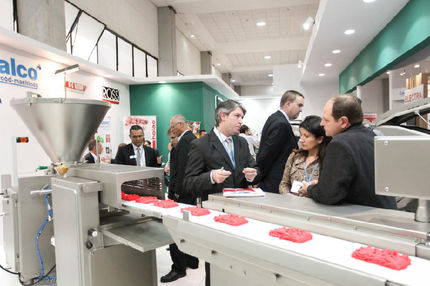Revolutionary milk pasteurization: focused ultrasound outperforms conventional methods
New technology kills bacteria at lower temperatures and preserves more nutrients
Advertisement
The food industry is on the verge of a breakthrough: Korean researchers have developed an innovative pasteurization technology that can effectively sterilize milk at just 55°C instead of the usual 63°C. The thermo-cylindrical focused ultrasonic process not only promises improved food safety, but also the preservation of valuable nutrients.

Symbolic image
AI-generated image
Superior germ reduction with gentler treatment
The study by the Korean scientists shows impressive results: When treated with 100 watts for 30 minutes at 55°C, all pathogens tested were completely eliminated. Both E. coli O157:H7 and Listeria monocytogenes - two of the most dangerous milk pathogens - could no longer be detected. Aerobic bacteria and coliforms were also successfully killed.
Compared to conventional low-temperature long-term pasteurization (LTLT) at 63°C for 30 minutes, the new process works at 8°C lower temperature and still achieves the same microbiological safety.
Better nutrient retention for healthier milk
Particularly important for consumers: the gentler treatment preserves significantly more healthy ingredients. The content of immunoglobulin G (IgG) - an important protein for the immune system - was over 80% with ultrasonic treatment, while conventional LTLT pasteurization only achieved 55%.
Alkaline phosphatase, an enzyme used to monitor pasteurization quality, was inactivated just as effectively by the 100-watt ultrasonic treatment as by the conventional method. This confirms the effectiveness of the new technology.
Improved product properties thanks to ultrasound
In addition to germ reduction, the focused ultrasound process also improves the physical properties of the milk. The fat globules are distributed more evenly and become smaller, resulting in better emulsion stability. The protein structure remains completely intact - an important advantage for the nutritional quality.
The pH value of the milk does not change and lipid oxidation remains within acceptable limits. Only a slight yellow coloration occurs, which is not perceptible to the human eye.
Industrial application in sight
The technology uses acoustic cavitation to combat microbes: ultrasonic waves generate microbubbles that release intense shock waves, high temperatures and pressures when they collapse. These physical forces destroy the cell membranes of microorganisms more effectively than purely thermal methods.
A pilot model (DEBREX 500) with a processing capacity of several hundred liters per day has already been developed. The researchers are working on scaling it up for industrial applications and are investigating other aspects such as nutrient retention and sensory properties.
The future of gentle milk processing
The focused ultrasound process could revolutionize the dairy industry: It combines effective germ control with the preservation of valuable nutrients and even improves product stability. For an industry struggling with declining milk consumption, this technology offers the opportunity to provide healthier and higher quality products.
However, the researchers emphasize that further studies on industrial applicability, especially on sensory properties and nutrient retention on an industrial scale, are still needed. Nevertheless, the study shows the enormous potential of this innovative pasteurization technology for the future of food processing.
Note: This article has been translated using a computer system without human intervention. LUMITOS offers these automatic translations to present a wider range of current news. Since this article has been translated with automatic translation, it is possible that it contains errors in vocabulary, syntax or grammar. The original article in German can be found here.
Original publication
Prabhathma Yasasvi Rathnayake, Soyeong Kim, Rina Yu, Chemin Nam, Sin-Young Park, Seonae Hwangbo, Hae In Yong; "Application of thermo-cylindrical type focused-ultrasound as novel milk pasteurization: microbial inactivation, immunoglobulin G retention, and physicochemical characteristics"; Ultrasonics Sonochemistry, Volume 123
Other news from the department science
Most read news
More news from our other portals
See the theme worlds for related content
Topic world Food safety
Food safety is at the heart of the food and beverage industry. It ensures that the food we eat every day is not only nutritious, but also free of harmful contaminants. From field to plate, the industry monitors and regulates every step of the process with strict quality controls, advanced testing methods and continuous research.

Topic world Food safety
Food safety is at the heart of the food and beverage industry. It ensures that the food we eat every day is not only nutritious, but also free of harmful contaminants. From field to plate, the industry monitors and regulates every step of the process with strict quality controls, advanced testing methods and continuous research.





























































